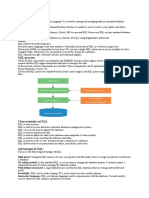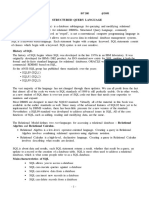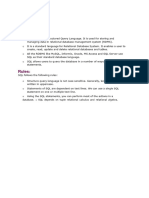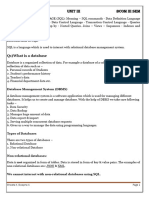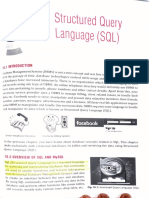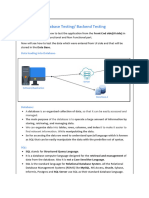0% found this document useful (0 votes)
2 views2 pagesCharacteristics of SQL: Is A Programming Language
SQL, or Structured Query Language, is a programming language used for managing data in relational database management systems (RDBMS) like MySQL and Oracle. It allows users to create, read, update, and delete data using English-like commands, and includes three types of commands: Data Definition Language (DDL), Data Manipulation Language (DML), and Data Query Language (DQL). SQL is characterized by its ease of learning and ability to define and manipulate data structures.
Uploaded by
abebeCopyright
© © All Rights Reserved
We take content rights seriously. If you suspect this is your content, claim it here.
Available Formats
Download as DOCX, PDF, TXT or read online on Scribd
0% found this document useful (0 votes)
2 views2 pagesCharacteristics of SQL: Is A Programming Language
SQL, or Structured Query Language, is a programming language used for managing data in relational database management systems (RDBMS) like MySQL and Oracle. It allows users to create, read, update, and delete data using English-like commands, and includes three types of commands: Data Definition Language (DDL), Data Manipulation Language (DML), and Data Query Language (DQL). SQL is characterized by its ease of learning and ability to define and manipulate data structures.
Uploaded by
abebeCopyright
© © All Rights Reserved
We take content rights seriously. If you suspect this is your content, claim it here.
Available Formats
Download as DOCX, PDF, TXT or read online on Scribd
/ 2







